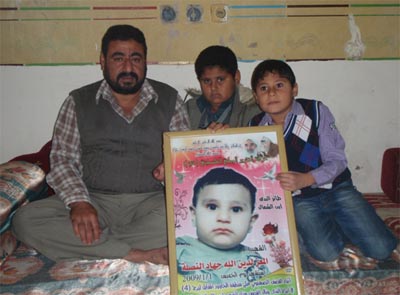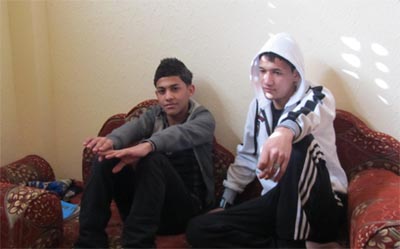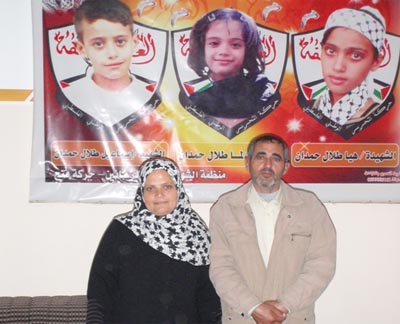Tag: Cast Lead
-
1 January 2009: The Nasla family
1 January 12 | Palestinian Center for Human Rights “I wish that if our fate is to die, that we die together, I wouldn’t want anybody left to have to bear this sort of pain” On 1 January 2009 at around 15:00, Israeli military planes targeted a water tower across from the home of the Nasla…
-
31 December 2008: The Abu Areeda family
31 December 2011 | Palestinian Center for Human Rights “Before my mother’s death we used to be very happy on 1 January, have celebrations and visit people. Now we are all silent in the last hour of each year and on 1 January we don’t celebrate the new year. We visit our mohter’s grave. We…
-
30 December 2008: The Hamdan family
30 December 2011 | Palestinian Center for Human Rights “When I wake in the morning the first thing I do is remember my children. I come and sit outside and picture them where they used to play. I don’t want to go out and interact with other people anymore. I largely stay inside the home”…



